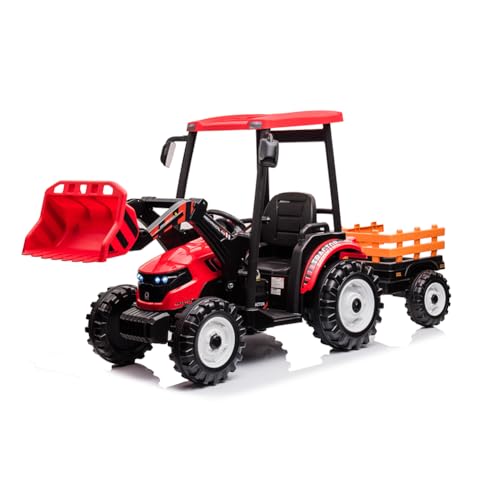
Taking a soil sample is an essential step in understanding the health and composition of your soil. Whether you are a passionate home gardener or a professional farmer, knowing how to take a soil sample correctly can help you make informed decisions about fertilizer application, soil amendments, and plant health. One of the easiest and most accessible ways to take a soil sample is by using a shovel.
Before you start, it is crucial to choose the right location for sampling. Make sure to select spots that are representative of your entire garden or field. Avoid areas that are obviously different, such as heavily compacted areas, recently fertilized spots, or where water collects. Randomly selecting multiple spots throughout your garden will provide a more accurate representation of the entire area.
Once you have selected the sampling locations, it’s time to grab your shovel. Make sure the shovel is clean and free from any debris or contaminants that may affect your soil sample. Start by inserting the shovel into the ground and push it in as deep as you want to sample, typically around 6 to 8 inches deep for most garden plants. Using a marking on the shovel or your hand as a guide can help ensure consistent depth for each sample.
When inserting the shovel, make sure to go straight down without any angling. Collect a slice of soil by pressing the shovel’s edge against the soil and using the leverage of the shovel to lift the soil slice out of the ground. Place the soil slice onto a clean surface, such as a plastic tray or a tarp, being careful not to break it apart or mix it with other samples. Repeat this process at each sampling location to collect multiple soil slices for a thorough analysis.
What to consider before taking a soil sample with a shovel
Before taking a soil sample with a shovel, it’s important to consider a few key factors to ensure accurate results and minimize any potential errors. Below are some important things to keep in mind:
1. Sampling location:
Choose the sampling location carefully, as it should be representative of the area of interest. Consider factors such as soil type, drainage patterns, topography, and vegetation cover. Avoid sampling areas that may have been disturbed or contaminated, such as near buildings or roads.
2. Sampling depth:
Determining the appropriate sampling depth is crucial. In general, it’s recommended to sample to a depth of 6 to 8 inches (15 to 20 centimeters). However, specific sampling depth requirements may vary depending on the intended use of the soil sample, such as for agriculture, gardening, or environmental studies. Consult local guidelines or experts for specific recommendations.
3. Sampling pattern:
Establish a systematic sampling pattern to ensure representative coverage of the area. The pattern might involve taking multiple samples in a zigzag pattern across the selected area, or in a grid layout. Follow a consistent sampling pattern to maintain accuracy.
4. Equipment and tools:
Use the appropriate shovel or digging tool for sampling. Make sure the shovel is clean and free from any residues or contaminants that could affect the sample. Consider using a stainless steel shovel or one made specifically for soil sampling to avoid contamination and ensure durability.
5. Sampling technique:
When using a shovel to take a soil sample, insert the shovel vertically into the ground at the desired sampling depth. Push the shovel forward to cut a straight and uniform sample. Avoid tilting or angling the shovel to ensure consistency across all samples. Take multiple subsamples from different areas within the sampling location and mix them together to create a composite sample.
6. Safety precautions:
Take necessary safety precautions while sampling with a shovel. Wear appropriate protective gear, such as gloves and sturdy footwear, to protect against potential hazards. Be cautious of sharp or pointed objects that may be present in the soil.
By considering these factors before taking a soil sample with a shovel, you can ensure accurate and representative results for your specific needs.
Best time to take a soil sample with a shovel
Taking a soil sample with a shovel is an important step in understanding the quality of your soil and determining what amendments may be necessary for optimal plant growth. However, the timing of when you take the sample can greatly affect the accuracy of the results. Here are some key considerations for determining the best time to take a soil sample with a shovel:
1. Avoid extreme weather conditions
It’s best to take a soil sample when the weather conditions are moderate and stable. Extreme temperatures or moisture levels can skew the results and provide inaccurate readings. Try to avoid taking samples during periods of heavy rain or drought, as this can affect the composition of the soil and make it harder to obtain accurate results.
2. Take samples when the soil is moist
While you want to avoid sampling during heavy rainfall, it’s important to take samples when the soil is slightly moist. This is because dry soil can be difficult to dig into and may not provide an accurate representation of the overall soil quality. If the soil is too wet, it can clump together, making it harder to collect a representative sample. Aim for a moisture level where the soil is crumbly and easy to work with.
Remember: always ensure the shovel is clean before taking a sample to avoid contamination.
By taking these factors into consideration, you can increase the accuracy of your soil sampling and ensure that you are making informed decisions regarding the health and productivity of your garden or landscape.
How to Properly Collect a Soil Sample with a Shovel
Collecting a soil sample is an important step in understanding the quality and composition of your soil. With a shovel, you can easily gather a representative sample for analysis. Follow these steps to ensure you collect a soil sample properly.
1. Choose the Right Shovel
Before collecting a soil sample, make sure you have the right shovel for the job. A shovel with a sharp edge and a sturdy handle will make it easier to dig into the soil and collect a clean sample. Avoid using a rusty or dull shovel, as this can contaminate the sample.
2. Select the Sampling Area
Decide on the area you want to sample. It’s essential to choose a representative area that reflects the overall soil conditions of your land. Consider the size of the area and the specific purpose of your soil analysis. Divide larger areas into smaller sections to collect multiple samples.
3. Dig the Soil
To collect a soil sample, start by inserting the shovel into the ground at the selected area. Push the shovel’s blade into the soil at a slight angle to prevent disturbing the layers below. Dig down to the desired depth, usually around 6-8 inches for general soil analysis.
Make sure to scoop a thin slice of soil from the side of the trench, as this will provide a representative sample of the soil profile. Avoid collecting soil from the top few inches, as it may not accurately represent the underlying layers.
4. Collect and Store the Sample
Once you’ve collected the soil sample, gently place it into a clean container. Use a bucket or a plastic bag with a firm seal to prevent any moisture from escaping or contaminants from entering.
Label the container with the sampling location, date, and any other relevant information. This will help you keep track of samples from different areas and make it easier when analyzing and interpreting the results.
Store the soil sample in a cool, dry place until you are ready to send it to a laboratory for analysis. It’s crucial to minimize any changes or alterations to the soil sample before analysis to ensure accurate results.
By following these steps, you can collect a soil sample properly using a shovel. Remember to take multiple samples from different areas to get a comprehensive understanding of your soil’s composition and quality.
Benefits of taking a soil sample with a shovel
When it comes to evaluating soil health and fertility, taking a soil sample with a shovel can offer several benefits. Here are some key advantages:
1. Cost-effective: Taking a soil sample with a shovel is a low-cost method compared to hiring professionals or using specialized equipment. All you need is a sturdy shovel, a clean bucket, and some basic knowledge about soil sampling techniques.
2. Accessibility: Shovels are readily available and easy to use, making them accessible to farmers, gardeners, and homeowners. You don’t need any fancy tools or complex machinery to collect a soil sample.
3. Versatility: A shovel allows you to collect samples from different areas of your garden or field, giving you a more comprehensive understanding of soil variability. You can easily dig small holes in various spots and combine the samples for a representative analysis.
4. Customization: With a shovel, you can choose specific locations and depths to collect soil samples according to your needs. This flexibility enables you to target areas that require specific attention or analysis, such as problem areas or newly established planting beds.
5. Immediate analysis: Once you collect a soil sample with a shovel, you can promptly send it to a laboratory for analysis or use DIY soil testing kits for quick on-site assessment. This allows you to gain valuable insights into your soil’s pH, nutrient levels, organic matter content, and other essential parameters for plant growth and health.
6. Long-term monitoring: Regularly taking soil samples with a shovel provides an opportunity for long-term monitoring of your soil’s health and fertility. By comparing results over time, you can track changes, detect any trends, and make informed decisions about soil management practices, fertilization, and amendments.
7. Sustainability: By taking a soil sample with a shovel and analyzing the results, you can tailor your gardening or farming practices to suit the specific needs of your soil. This targeted approach minimizes the use of unnecessary fertilizers, pesticides, and amendments, reducing potential environmental impact and promoting sustainable agriculture.
In conclusion, taking a soil sample with a shovel offers a cost-effective, accessible, versatile, and customizable method for assessing soil health and fertility. It allows for immediate analysis, long-term monitoring, and sustainable management practices, making it a valuable tool for both professionals and enthusiasts.






